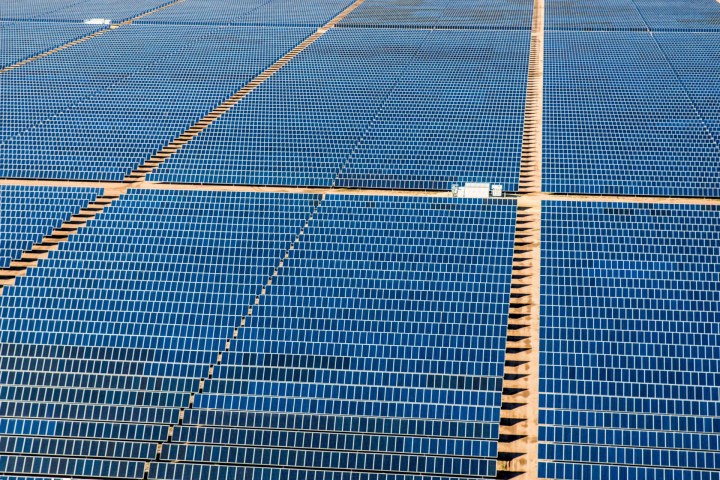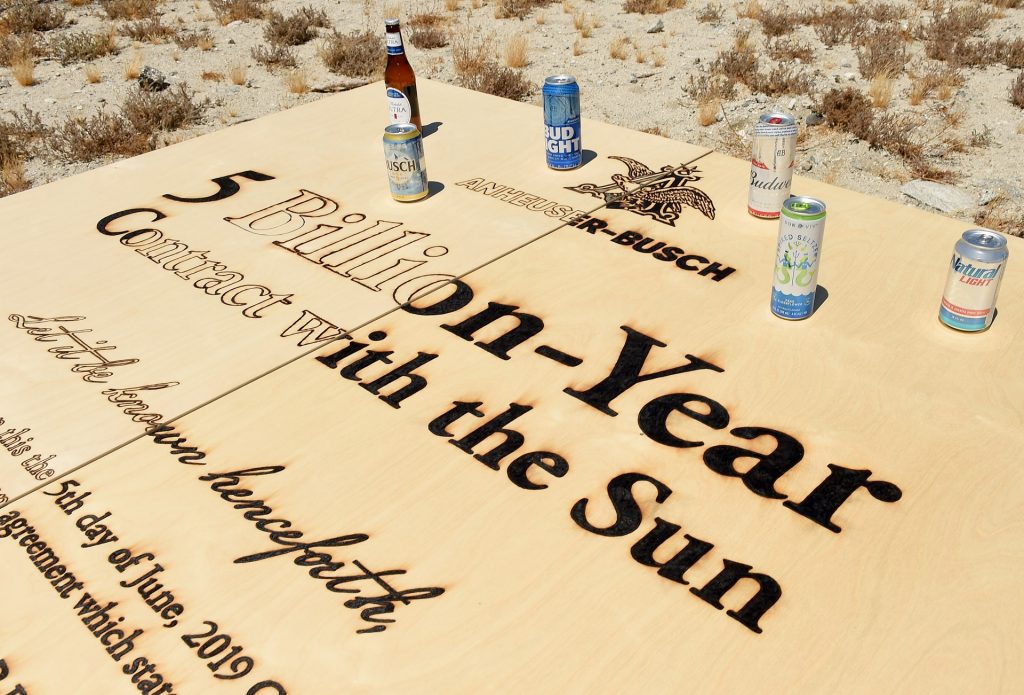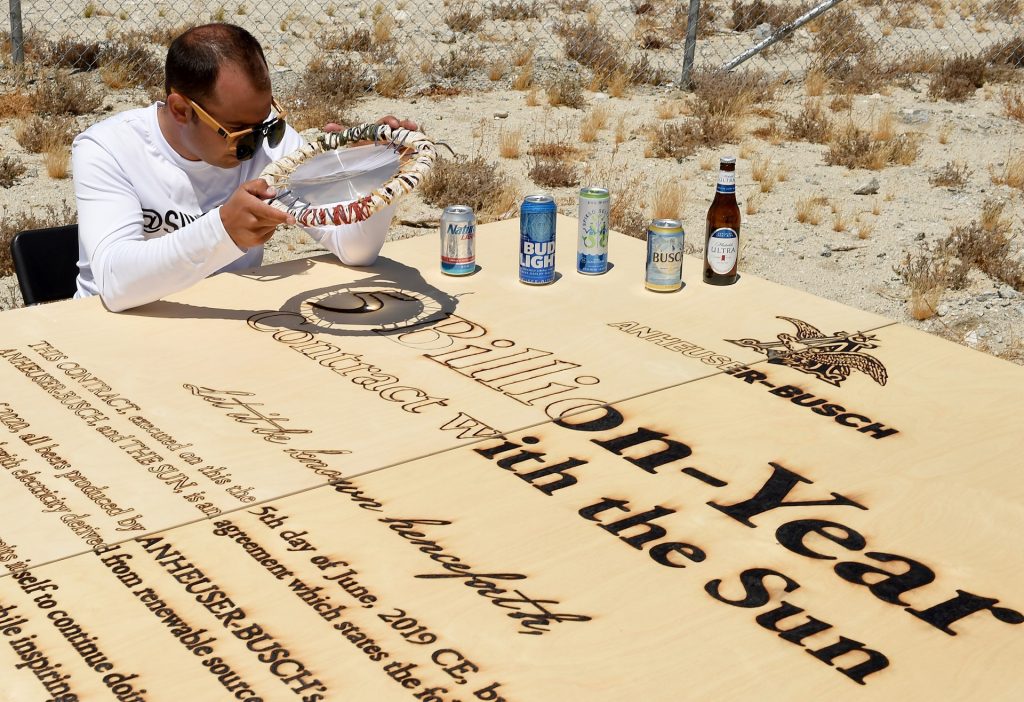
Since 1926, Pecos County, Texas has been home to one of the largest oil fields in the United States. To date, it has produced more than a billion barrels of oil and, experts suggest, there is another billion barrels yet to be tapped.
But drive through Pecos County a couple of years from now, and it might not be the giant Yates Oil Field that most commands your attention. Rather, your eye may be drawn by an enormous solar power farm, on track to be the seventh largest ever built, stretching as far as the eye can see, for around 2,000 acres in total. As Angie Slaughter, one of the people behind the project, told Digital Trends, that’s “about 1,500 football fields of nothing but solar panels.”
Oh yes, and did we mention that its 222-megawatt capacity will be used for brewing beer? That’s one more reason to feel good about hitting the bar on a Friday night!
The high cost of drinking beer
The new solar power station is the work of Recurrent Energy, a utility-scale solar and energy storage project developer on the cutting edge of clean energy, and a conglomerate called Anheuser-Busch Companies. If this second name doesn’t ring a bell with you, its products almost certainly do. Anheuser-Busch is the world’s largest beer producer; the company responsible — at least in the United States — for producing domestic beers that include Bud Light, Golden Road, Michelob ULTRA, Busch, and many more. By building its new solar plant, the world’s largest beer manufacturer will do something that no other major beverage player has yet been able to: To brew 100% of its beverages using renewable electricity.
“Your six pack probably was made with enough energy to run [a 40-inch Energy Star TV] for 20 hours.”
“When you look at the components of a beer, it’s [made from] very natural ingredients,” Slaughter, who is vice president of sustainability at AB InBev, continued. “So it only makes sense for us to have long-term sustainable supplies of energy and water. It fits with our production and the underlying processes of what we manufacture. There’s a strong connection point.”
Many of us (myself included) may not give too much thought to the energy use that goes into making beer. That’s despite the fact that it remains, by far, the most popular alcoholic beverage in North America, significantly beating out both wine and liquor. In 2017, beer makers shipped some 26.4 gallons of the stuff per American adult. That’s a lot of beer. It’s also a lot of electricity to power its creation.

Given the different scales involved in brewing, taking in everything from the comparatively “home brew” qualities of smaller craft beer manufacturers to the giants like Anheuser-Busch, it’s tough to get exact figures, but it’s probably more than you think. Making beer is surprisingly energy-intensive. According to a survey carried out earlier this decade, average energy consumption is approximately 207 megaJoules per 100 liters of beer that’s produced. This breaks down to around 0.2 kilowatt-hours per bottle, meaning that, as one analyst put it, “Your six pack probably was made with enough energy to run [a 40-inch Energy Star TV] for 20 hours.”
These numbers have been coming down in recent years, thanks to new energy efficiency measures, but progress was still slow. Then, in 2017, Anheuser-Busch announced that it was going to make sure that all of its purchased electricity came from renewable sources by 2025, combined with a reduction of 25% of CO2 emissions across the entire upstream and downstream supply chain. At the time, it wasn’t entirely clear how that this was possible. With the addition of the new solar farm, Anheuser-Busch is showing that not only is it possible; it’s actually managing to beat its own self-imposed target by close to half a decade.
“… They want to know that they’re buying from a company that’s responsible.”
“This latest announcement is thrilling for us because it’s what will deliver on that 100% mark for the entire North America zone,” Slaughter said. “That’s all of the electricity that we source in the U.S.”
Not all of the company’s sustainable energy will come from solar power. The 650 gigawatt hours annually that the new plant will churn out amounts to around half of the total energy demands that the company has in a typical year. The rest comes from a wind farm in Oklahoma, which is already operational. Together, this 50% solar and 50% wind energy mix adds up to the 100% benchmark Anheuser-Busch has touted.
A 5 billion year contract
News of the milestone was announced earlier this month at an event celebrating World Environment Day. At a dedicated press conference in Fairfield, CA, CEO Michel Doukeris signed a “five-billion year” contract with the Sun (the estimated time remaining before the star at the center of our solar system burns out) to provide energy to the new plant. This signing process was carried out using heliography, a technique in which mirrors and lenses focus sunlight, to sign the contract on a special wooden plaque.
A slightly goofy stunt? Certainly. But while companies embracing renewable energy sources would probably prefer to avoid words like “stunt,” sometimes an attention-grabbing stunt is just what’s needed. In a sea of press releases touting marginal improvements to sustainability efforts, it’s a cannon blast to signify that a giant leap has been made.
“Consumers in general are becoming increasingly educated around these questions of sustainability,” Slaughter said. “They’re asking for this. They want to know everything about the products that they’re buying, and they want to know that they’re buying from a company that’s responsible.”
Anheuser-Busch isn’t, it should be noted, the only company to proclaim that all of its energy needs are now met sustainably. Both Google and Apple are two high profile tech companies which have achieved 100% renewables. They were joined, in May last year, by the LEGO Group, which managed to beat its own target date three years ahead of schedule. All of these companies showcase how breakthroughs in fields like solar energy, particularly in terms of greater efficiency and lowering costs, are now paying off.
For a beverage company the size of Anheuser-Busch, however, this is a world-first — although Slaughter said that she certainly wishes that it won’t be the last. “I hope that we inspire all of our competitors, and different people in the industry, to move in this same direction,” she noted.




